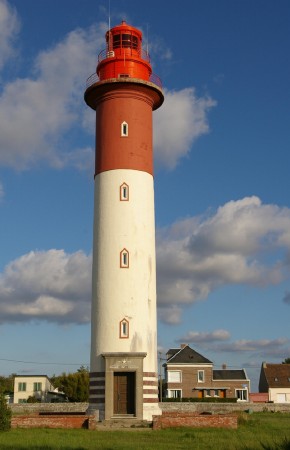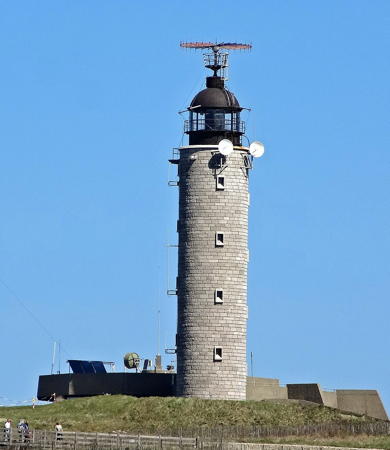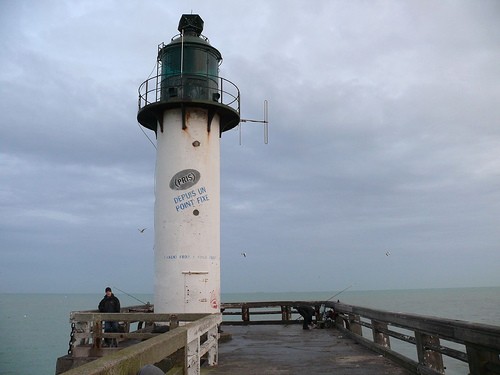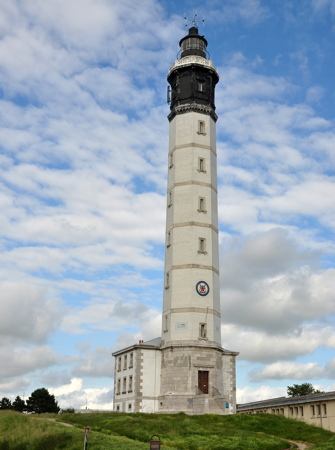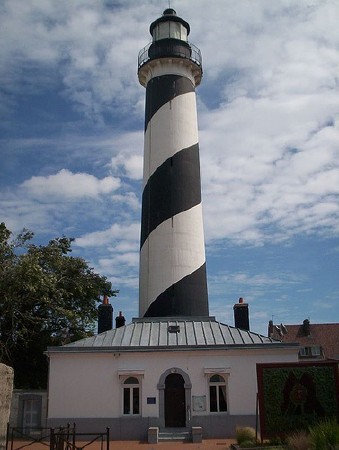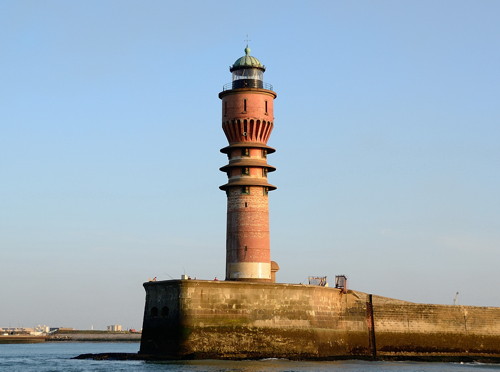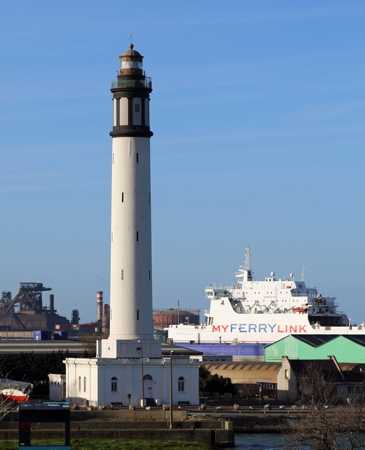France (officially the French Republic, République française) has coasts facing south on the Mediterranean Sea, west on the open Atlantic Ocean, and north on the English Channel (La Manche in French). Long a leader in lighthouse design, France has scores of famous and historic lighthouses. And it was a French engineer and physicist, Augustin-Jean Fresnel (1788-1837), who invented the powerful and beautiful lenses used in lighthouses around the world.
Metropolitan (European) France is divided into 13 administrative regions (régions) and the regions are divided into departments (départements). This page lists lighthouses of the northernmost part of the country, the region called Hauts-de-France ("Upper France"). The Hauts de-France region includes the three coastal départements of Somme, Pas de Calais, and Nord. The region faces the Pas de Calais (Strait of Dover) and its approaches from La Manche (the English Channel) to the west and from the North Sea to the north. The strait narrows to a width of 33 km (20 mi) at Cap Gris Nez. Before modern navigation systems were developed lighthouses were of crucial importance in protecting the heavy volume of shipping through these narrow seas.
This coastline saw fierce fighting during World War II, especially during and after the Allied D-Day invasion of June 1944; very few of the lighthouses in the area escaped damage and some were destroyed.
The French word for a lighthouse, phare, is often reserved for the larger coastal lighthouses; a smaller light or harbor light is called a feu (literally "fire," but here meaning "light") or a balise (beacon). The front light of a range (alignement) is the feu antérieur and the rear light is the feu postérieur. In French île is an island, cap is a cape, pointe is a promontory or point of land, roche is a rock, récife is a reef, baie is a bay, estuaire is an estuary or inlet, détroit is a strait, rivière is a river, and havre is a harbor.
Aids to navigation in France are maintained by the Bureau des Phares et Balises, an agency of the Direction des Affaires Maritimes (Directorate of Maritime Affairs). The Directorate has four regional offices (called Directions Interrégionale de la Mer, or DIRM) at Le Havre, Nantes, Bordeaux, and Marseille. Lights in this area are managed by the DIRM Nord-Atlantique Manche Est - Mer du Nord (DIRM-MEMN) at La Havre.
ARLHS numbers are from the ARLHS World List of Lights. FR numbers are the French light list numbers, where known. Admiralty numbers are from volume A of the Admiralty List of Lights & Fog Signals. U.S. NGA List numbers are from Publication 114.
- General Sources
- Phares de la DIRM MEMN
- Lighthouse information from the DIRM regional office.
- Les Sentinelles des Mers - France Nord
- Photos and information posted by Guy Detienne.
- Le Phare à travers le Monde
- A large, well known site maintained by Alain Guyomard and Robert Carceller.
- Online List of Lights - France North Coast
- Photos by various photographers posted by Alexander Trabas. Many of the photos for France are by Arno Siering or by Capt. Peter Mosselberger ("Capt. Peter").
- Phareland, le Site des Phares de France
- This comprehensive site has good photos and information about the major lighthouses.
- Leuchttürme.net - Frankreich - Nord, Pas de Calais, Picardie
- Photos and notes by Malte Werning.
- Lighthouses of France
- Excellent photos by Marc de Kleijn.
- Lighthouses in Hauts-de-France
- Photos by various photographers available from Wikimedia.
- France Lighthouses
- Aerial photos posted by Marinas.com.
- Société Nationale pour le Patrimoine des Phares et Balises (S.N.P.B.)
- The French national lighthouse preservation organization.
- Französische Leuchttürme
- Historic photos and postcard images posted by Klaus Huelse.
- GPSNavigationCharts
- Navigational chart information for northern France.
- Navionics Charts
- Navigational chart for La Manche and the Pas de Calais.

Ault Light, Ault, Somme
photo copyright Arno Siering; used by permission
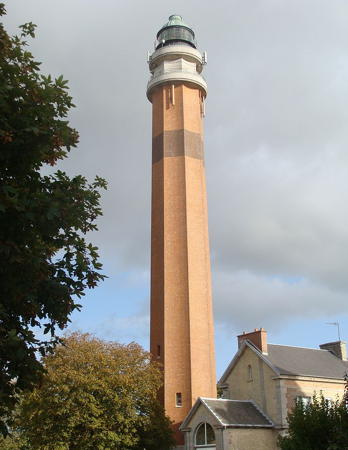
La Canche Light, Le Touquet, Pas de Calais, September 2010
Wikimedia Creative Commons photo by Marie-Jo L.
